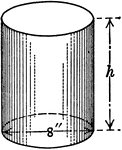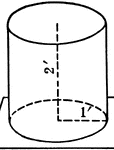
Right Circular Cylinder With 1 ft. Radius and 2 ft. height.
Right circular cylinder with a radius of 1 foot and a height/altitude of 2 feet.

2 Smaller Cylinders In A Larger Cylinder
A large cylinder containing 2 smaller congruent cylinders. The small cylinders are externally tangent…

3 Smaller Cylinders In A Larger Cylinder
A large cylinder containing 3 smaller congruent cylinders. The small cylinders are externally tangent…
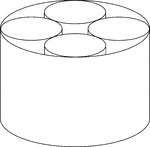
4 Smaller Cylinders In A Larger Cylinder
A large cylinder containing 4 smaller congruent cylinders. The small cylinders are externally tangent…
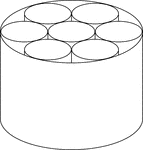
7 Smaller Cylinders In A Larger Cylinder
A large cylinder containing 7 smaller congruent cylinders. The small cylinders are externally tangent…
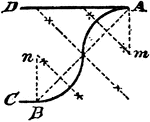
Construction Of A Cyma
An illustration showing how to construct a cyma, or two circle arcs that will tangent themselves, and…
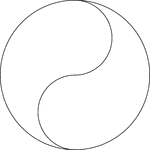
Design Similar to Yin Yang Symbol
Design made by drawing one large circle and then two circles that are vertically placed and internally…

Circular Design
Circular design made by rotating circles about a fixed point. The radii of the smaller circles is equal…

Circular Design
Circular design made by rotating circles about a fixed point. The radii of the smaller circles is equal…
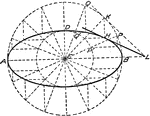
Determining Points on Ellipse Using Circles
Using C as a center, draw two circles with different diameters. The intersection of the diameter lines…

Development Exercise of Dome and True Shape of Hip
A development or rolled out image exercise problem of the dome and finding the true shape of the hip,…
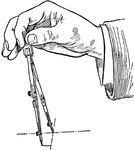
Drawing a Circle Using Compass
When drawing the circle, the compass is turned by the handle with the thumb and forefinger in a clockwise…
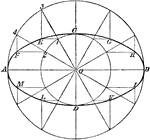
Construction of Ellipse by Describing Circles
Illustration used to draw a an ellipse using string and pins by describing a circles with diameters…

Construction of Ellipse
Illustration used to draw a an ellipse with major axis AB and minor axis CD.
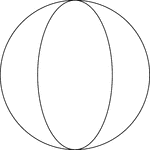
Ellipse Inscribed In A Circle
Illustration of an ellipse, whose major axis is vertical, inscribed in a circle whose diameter is equal…

Section of a Cylinder Showing an Ellipse
Illustration showing an ellipse (and circle) as a section from a cylinder.
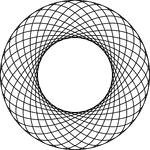
16 Rotated Concentric Ellipses
Illustration of 16 concentric congruent ellipses that are rotated about the center at equal intervals…
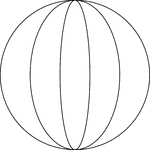
2 Ellipses Inscribed In A Circle
Illustration of 2 concentric ellipses, whose major axes are vertical, inscribed in a circle whose diameter…
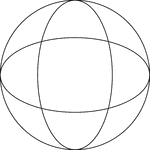
2 Rotated Concentric Ellipses
Illustration of 2 concentric congruent ellipses that are rotated about the center at 90°. The ellipses…
2 Ellipses With Equal Vertical Axes
An illustration of 2 ellipses that have the equal vertical axes, but different horizontal axes. The…

2 Ellipses With Equal Vertical Axes
An illustration of 2 ellipses that have the equal vertical axes, but different horizontal axes. The…

3 Concentric Ellipses
An illustration of 3 concentric ellipses that are tangent at the end points of the vertical axes. The…

3 Concentric Ellipses
An illustration of 3 concentric ellipses that are tangent at the end points of the vertical axes, which…

3 Concentric Ellipses
An illustration of 3 concentric ellipses that are tangent at the end points of the vertical axes. The…
4 Concentric Ellipses
An illustration of 4 concentric ellipses that are tangent at the end points of the vertical axes. The…

4 Concentric Ellipses
An illustration of 4 concentric ellipses that are tangent at the end points of the vertical axes. The…

4 Concentric Ellipses
An illustration of 4 concentric ellipses that are tangent at the end points of the vertical axes, which…
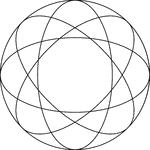
4 Rotated Concentric Ellipses
Illustration of 4 concentric congruent ellipses that are rotated about the center at equal intervals…

5 Concentric Ellipses
An illustration of 5 concentric ellipses that are tangent at the end points of the vertical axes. The…

5 Concentric Ellipses
An illustration of 5 concentric ellipses that are tangent at the end points of the vertical axes, which…

6 Concentric Ellipses
An illustration of 6 concentric ellipses that are tangent at the end points of the vertical axes. The…

6 Concentric Ellipses
An illustration of 6 concentric ellipses that are tangent at the end points of the vertical axes, which…
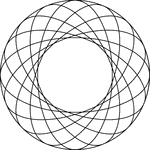
8 Rotated Concentric Ellipses
Illustration of 8 concentric congruent ellipses that are rotated about the center at equal intervals…

Ellipses Inscribed In A Circle
Illustration of concentric ellipses, whose major axes are vertical, inscribed in a circle whose diameter…
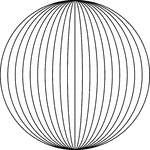
Ellipses Inscribed In A Circle
Illustration of concentric ellipses, whose major axes are vertical, inscribed in a circle whose diameter…

Construction Of An Equilateral Triangle Inscribed In A Circle
An illustration showing how to construct an equilateral triangle inscribed in a circle. "With the radius…

Construction Of An Evolute Of A Circle
An illustration showing how to construct an evolute of a circle. "Given the pitch p, the angle v, and…
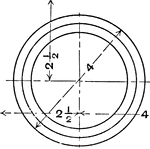
Mechanical Drawing Exercise Circle with Wavy Curved Lines Inside
A mechanical drawing exercise of a circle with curved wavy lines. The image is drawn by dividing horizontal…
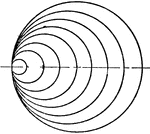
Curved Line with Circle Mechanical Drawing Exercise
A mechanical drawing exercise of drawing a curved line with circle in the middle. The image is drawn…

Drawing Exercise Eight Concentric Circles using Ink
A drawing exercise for drawing eight concentric circles by dividing the paper in quarters as shown.…
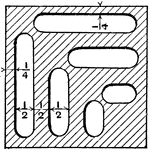
Dotted Lined Eight Concentric Circles using Ink and Pencil Drawing Exercise
Mechanical drawing exercise of drawing dotted lined concentric circles. The circles are first drawn…
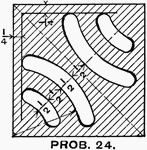
Drawing Exercise of Inscribed Circle Pattern Tangent to Left Side
An inscribed circle pattern exercise for mechanical drawing. The pattern is drawn by dividing the horizontal…
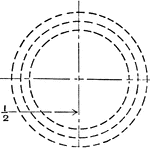
Inscribed Circle with Smaller Circles at Tangent Points Both Sides of the Large Circle Mechanical Drawing Exercise
Mechanical drawing exercise for circle with two tangent points on both sides of the circle. The paper…
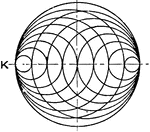
Mechanical Drawing Exercise Shading Sides of Inscribed Circle with Ink
A mechanical drawing practice problem of shading the sides of the inscribed circles. The darker area…
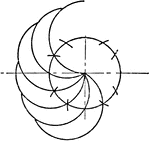
Mechanical Drawing Exercise Shading Sides of Small Circles with Bow Pen
An exercise to shade small circles with bow pen for mechanical drawing. The paper is first divided into…
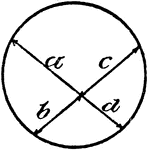
Model Of Geometric Proportions In A Circle
An illustration showing a model of a circle with intersecting chords that illustrates the following…

Model Of Geometric Relationships In 2 Circles
An illustration showing a model of 2 circles with tangent lines, diameters, and radii that illustrates…

Model Of Geometric Relationships In 2 Circles
An illustration showing a model of 2 circles with tangent lines, diameters, and radii that illustrates…

Model Of Geometric Relationships In A Circle
An illustration showing a model of a circle with an exterior angle formed between a tangent and a secant…

Model Of Geometric Relationships In A Circle
An illustration showing a model of a circle with angles formed between tangents and secants that illustrates…

Polar Grid In Degrees With Radius 10
Illustration of a polar graph/grid that is marked and labeled in 30° increments and units marked…

Polar Grid In Degrees With Radius 10
Illustration of a polar graph/grid that is marked, but not labeled, in 30° increments and units…

Polar Grid In Degrees With Radius 1
Illustration of a polar graph/grid that is a unit circle marked and labeled in 30° increments.

Polar Grid In Degrees With Radius 1
Illustration of a polar graph/grid that is a unit circle marked, but not labeled, in 30° increments.
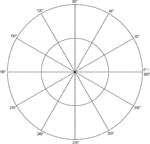
Polar Grid In Degrees With Radius 2
Illustration of a polar graph/grid that is marked and labeled in 30° increments and units marked…
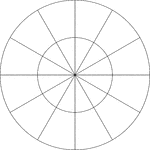
Polar Grid In Degrees With Radius 2
Illustration of a polar graph/grid that is marked, but not labeled, in 30° increments and units…
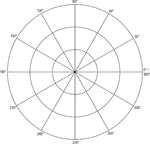
Polar Grid In Degrees With Radius 3
Illustration of a polar graph/grid that is marked and labeled in 30° increments and units marked…

Polar Grid In Degrees With Radius 3
Illustration of a polar graph/grid that is marked, but not labeled, in 30° increments and units…
